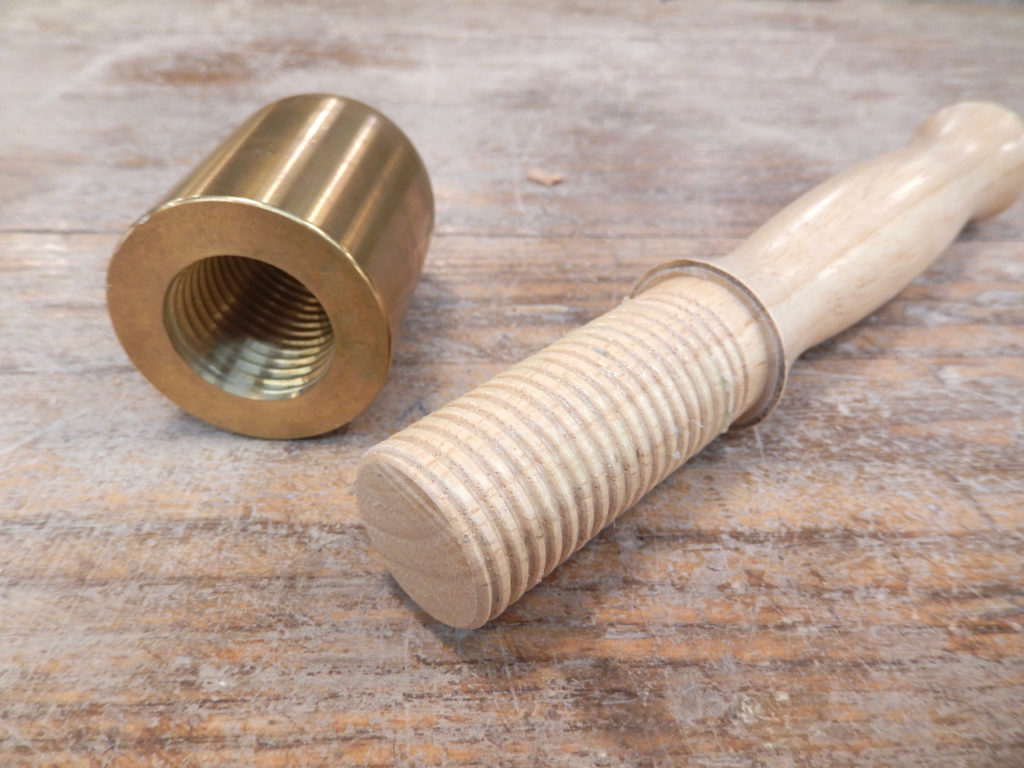We may receive a commission when you use our affiliate links. However, this does not impact our recommendations.
 If you follow my blog, you know that I have an affinity for striking tools. Check my entries on hammers, turned mallets and carved mallets (from branches) if you haven’t had a chance to read them before.
If you follow my blog, you know that I have an affinity for striking tools. Check my entries on hammers, turned mallets and carved mallets (from branches) if you haven’t had a chance to read them before.
A few years ago I purchased a set of brass head mallets from Lee Valley that I use occasionally. I liked them, so last year I ordered two more brass mallets for our woodworking program. One is the Lee Valley Veritas Journeyman’s Mallet and the other is a heavier 1-1/2 lb head mallet made in Taiwan. The later is sold by Amazon and other online woodworking stores.
I have found that a brass mallet is a compact tool that can deliver a decisive strike to gouges and chisels. Its mass to size ratio is impressive and it’s compact size means that you can comfortably hold it in your apron pocket and summon it to action at will.


Both the Lee Valley brass mallet and the Taiwanese made mallet have screw-on heads. The difference between the two is that Lee Valley embedded a threaded stud in the handle that screws into a threaded hole in the head, while the Taiwanese manufacturer threaded the wood handle and it screws directly into the head to allow the two to marry in a very dependable way.

The Veritas Journeyman’s mallet is equipped with a threaded stud to connect the brass head to the cherry handle. The brass head is not glued to the stud.

The neck on The Taiwanese mallet’s wooden handle is threaded. It fits perfectly into the threads milled inside the brass head.
The Lee Valley solution is appropriate for the size of their mallet, but the Taiwanese approach seems to be a more robust for a mallet of such weight. When I got the Taiwanese mallet I have no idea how the handle was connected to the head. After a few months of use, when the weather got colder and the humidity in the shop dropped, the wooden handle shrank and I noticed that I could thread it out of the head. It was only secured by a thin bead of glue similar to the adhesive that oozes out of a hot glue gun. Perhaps the manufacturer should have used a different adhesive or spread the glue consistently all over the threads. But I actually like the fact that I can tighten or loosen the head if I want to, plus, it allows me to explain to students how bolt threads work. It cost around $22 on Amazon which is a real bargain for anybody who likes to use brass mallets.
If you do buy the Taiwanese version and you wish to secure the head permanently, do this: Clean any remains of the glue from the threads with alcohol, spread epoxy glue on the threads and drive the handle home. That should do the trick.


Perhaps the only disadvantage for having such mallets in a woodworking program, based on my particular experience at least, is that I constantly am forced to disappoint my students when they ask me to use the tools, as I have to keep telling them that “the golden” mallets can only be used by the teachers.
Here are some supplies and tools we find essential in our everyday work around the shop. We may receive a commission from sales referred by our links; however, we have carefully selected these products for their usefulness and quality.










